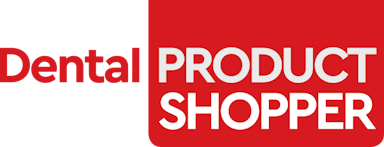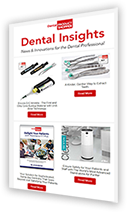PICK UP A POWERFUL SCALING ROUTINE
DPS explores the backbone of the hygiene appointment—the power scaler—as well as a variety of hand instruments designed to bring patients back to optimal oral health
It wasn’t that long ago when the CDC recommended dental offi ces avoid or limit use of power scalers to cut down on aerosol generation in the operatory. As we emerge from our pandemic bubble and learn how to live with COVID-19, it’s worth exploring how pandemic-related concerns have impacted both patients and hygienists.
Filling in the Gaps
Malee Wong, RDH, shares that while initially patients’ concerns were fear-based—stemming from the risk of catching COVID-19 at the dental offi ce—over the past two years, those anxieties have evolved.
“Many patients have expressed job changes or job loss due to the pandemic, which can potentially lead to a drop in dental insurance,” said Wong, adding that this is one reason why patients have lapsed on recalls since the start of the virus. “Regardless of the reasons why patients chose to neglect their oral health, their doing so makes a typical 1-hour appointment last much longer due to extra efforts in scaling the additional calculus and stain that have accumulated on their teeth over the past 2 to 3 years that they decided not to step foot in a dental office—not to mention the need to update their x-rays and perio charting. This type of patient contributes to my overall fatigue due to lack of scheduled time, and sometimes gives me hand cramps due to additional calculus accumulation.”

“Patients who neglect their oral health make a typical 1-hour appointment last much longer due to extra efforts in scaling the additional calculus and stain that have accumulated on their teeth.”
- Malee Wong, RDH
Resuming the Routine
While treatment protocols in most practices have returned to normal and Wong is back to using her beloved Cavitron, there have been some changes that stuck—perhaps for the better. “Some offi ces have implemented air purifi ers and HVE tools to help minimize aerosols and make sure employees and patients feel safer in a dental setting,” she said.
Most hygienists would likely agree that there will always be patients who lapse on their recalls and neglect their oral health. “For those with heavy buildup, I usually recommend they start using an electric toothbrush, swish with water after any food, drink, or inhaled product, and develop a better oral care routine that includes fl ossing or using a water flosser,” noted Wong. “If there is extra time in the appointment, I usually demonstrate how to use the electronic products.”
Most hygienists employ a combination of power and hand scaling, depending on the patient’s unique cleaning needs. Here, the DPS editorial team explores several ultrasonic scalers, tips, and inserts, as well as hand scalers and curettes designed to tackle the toughest calculus while keeping user comfort in mind.
ULTRASONIC SCALERS, INSERTS, & TIPS
A hygienist favorite, the latest version of Dentsply Sirona's Cavitron ultrasonic scaling system is the Cavitron 300 Series, which features a digital operating system that produces less heat and requires less water for increased patient comfort. The Steri-Mate 360 rotating handpiece is compatible with Cavitron Thinsert, Slimline, and Powerline Ultrasonic Inserts, the latter of which are thicker inserts with larger tips designed for efficient removal of heavy calculus deposits.
Henry Schein’s newly redesigned ACCLEAN preventives family includes the ACCLEAN Ultrasonic Scaler, a dual-frequency unit with a hands-free, on-demand boost mode for difficult calculus removal, internal cooling system, and autoclavable handpiece sheath that detaches for easy infection control. Small and lightweight at 1.3 pounds, it features a compact design and can be easily moved when needed.

Parkell’s TurboSensor is designed with an on-demand, foot-controlled Turbo Power Boost to combat heavy calculus, while its broad range of power easily accommodates both sensitive patients with light deposits and those who have not had a recent professional scaling. All-metal ultrasonic inserts include the Burnett Power-Tip, whose mass is greater along the working portion of the tip to transfer more energy when tackling hard calculus, interproximal accretions, or amalgam overhangs.
Vista Apex’s H Series of Piezo Periodontal Dental Tips are designed for deep pocket access during suband supragingival scaling, powerful enough for medium to heavy calculus removal. Diamond-coated left- and right-bend tips can be used on furcations and interproximal sides of molars and premolars at low power settings.
NSK’s iPiezo engine supplies the appropriate power to the tip depending on the condition of the tooth surface, providing a stable frequency output without dropping the power, even when removing hard calculus. It pairs with the extremely slim Varios2 handpiece, which has twin LED lights to ensure shadow-free visibility. An extensive range of ultrasonic scaler tips meets the widest variety of applications.
DENTALEZ’s Titan Blis-sonic ergonomic scalers connect to existing air-driven tubings and foot control and have silicone grips—available in aqua, pink, lavender, and blue—to prevent finger fatigue. Designed to effectively remove hard calculus deposits and stains, the sonic scalers weigh only 45 grams with an autoclavable motor and grips.
HAND SCALERS & CURETTES PDT’s
Queen of Hearts universal periodontal finishing curette has longer closed-face cutting edges capable of reaching furcations and difficult-to-reach root concavities; a 6-mm cutting edge slides easily into deep pockets when leading with the toe and performing a horizontal stroke. The Montana Jack has a thin, durable sickle blade and rigid shank for tough debridement, cement removal, and interproximal carving. An ergonomic instrument handle with knurling to the shank provides increased comfort with less hand fatigue.

American Eagle’s robust line of hygiene tools includes XP Sharpen-Free hand instruments, which feature a stronger, sharper edge that eliminates the need to sharpen, and Quik-Tip cone socket instruments, which have a deeper shank angle for supragingival scaling in the posterior. A single end can be discarded when dull without having to replace the entire instrument.

HuFriedyGroup’s Harmony Ergonomic Scalers and Curettes use TrueFit Technology to reduce pinch force by up to 65% and reduce pressure on the tooth by 37%, while EverEdge 2.0 working ends are developed with a superior stainless-steel alloy that stays sharper longer for less frequent sharpening and greater clinical efficiency. An extended silicone grip provides a secure and nimble grasp and geometric pattern to maximize grip in all directions.
Henry Schein’s MaxiGrip Ergo Silicone Scalers and Curettes feature medical-grade silicone handles that provide hygienists with a secure, comfortable grip while maintaining tactile sensitivity. Tips are made of surgical-grade stainless steel with superior edges to maintain optimal efficiency and wear characteristics, while a metal core provides ideal weighting and durability.
A sharpen-free option that saves time and money, LM-Dental’s LM Sharp Diamond periodontal instruments use an ultra-hard coating that keeps them razor sharp, while premium-quality soft silicone grips improve sensitivity and comfort. A Physical Vapor Deposition coating protects the fine surgical-steel edge to enable effective calculus removal without fracturing.
Patterson Dental offers a variety of scalers and curettes both from leading manufacturers and its own private label brand, including double-ended Patterson Sickle Scalers, curette-type instruments fitted with a blade tip to file and scrape away plaque and other residue from tooth surfaces. Brasseler’s ImplantPro Scalers & Curettes are made from non-heat-treated 6Al-4V titanium, keeping the Rockwell C hardness at a low 25–31 HRC, which is comparable with most implant abutments. The elongated terminal shanks and thinner, shorter blades reduce tissue distension and ease subgingival insertion. The instruments feature distinctive, lightweight PEEK handles.




